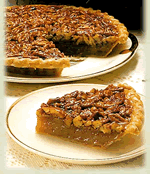
12/01/10 update: For current information, please download The 2010-11 Economic Report on Retail and Specialty Pharmacies and see Exhibits 2 and 3.
Before I take my usual summer break from blogging (alas, not also a work vacation), I want to share my estimates of 2008 pharmacy market share by company along with some predictions for 2009.
FYI, I will be attending the NACDS 2009 Pharmacy & Technology Conference from August 9 through 11 in Boston. Please email me (mailto:afein@pembrokeconsulting.com) if you'd like to set up a one-on-one meeting with me in Boston. And if you just bump into me there, please feel free to introduce yourself and tell me what you like (or hate?) about the Drug Channels blog.
OVERALL MARKET TRENDS
The NACDS economics department just released its very useful stats on the overall pharmacy market in 2008. They kindly make these data freely available for download here: 2008 Community Pharmacy Results.
Total 2008 pharmacy sales of prescription drugs were $253.6 billion, up only 1.8% from 2007. However, there was substantial variation among dispensing channel format. Chain pharmacy, mail order, and mass merchants grew in 2008, while supermarkets and independents shrank. See page 5 of the NACDS slides for more details.
MARKET SHARE BY COMPANY
The chart below shows my estimates of market share by company using the NACDS overall market size figure. (Note: NACDS does not provide market share by company, so don't blame them if you disagree.) Click here to download this market share chart as a PDF file that's suitable for framing in your beach house.

PREDICTIONS FOR 2009
The big will get bigger. The top six dispensing pharmacies – CVS Caremark, Walgreens, Medco Health Solutions, Rite-Aid, Walmart, and Express Scripts – accounted for about 60% of U.S. pharmacy dispensing revenues. Like it or not, the more efficient dispensing channels will continue to gain share of the pharmacy market.
Walmart will gain share. Based on recent trends, I expect that Walmart (including Sam's Club) will become the third-largest retail store-based pharmacy in 2009, surpassing Rite-Aid.
Supermarkets will keep losing share. The NACDS figures show supermarket pharmacy sales declining by 5.6% in 2008 following 2007's decline of 2.8%. This shift reflects the ongoing shakeout in the retail food industry and the growth of (you guessed it) Walmart, which now has a more than 20% share of U.S. retail grocery sales. The sales decline also reflects the willingness of these non-pharmacy dependent retailers to jump into the retail generic price war.
Independents will keep losing share, but more slowly. Independent pharmacies face numerous competitive challenges, including a loss of profitability from cash-pay customers. (See Pharmacy Profits and Wal-Mart.) However, the strong survivors will be better positioned than supermarkets and the second-tier mass merchandisers.
----
So, dear reader, any thoughts on these data before we head into the summer?
Useful chart - thanks for posting.
ReplyDeleteAdam, as always Thanks! Good stuff. When I look at the chart I'm thinking Wal Mart is not going to be content to stay at #3. Given their moves in the past I see them wanting to continue to take share. And I suspect they'll do it in innovative ways/game changing ways.
ReplyDeleteUnlike the others, they have a complete store and they focus on total store sales. They know they are missing non-pharmacy sales everytime a Wal Mart customer buys drugs at CVS, Walgreen, etc. They'll continue to look for ways to drive total store business via the pharmacy.
Have a good summer and travel safe.
We are all not looking at the actual affect Wal-Mart will continue to have on the big three CVS, Rite Aid and Walgreens. The big three business models where build on high margins of generic scripts to support their retail locations. As they continue to loose big margins in the pharmacy scripts they will be a high ticket to pay every month on their facilities. Wall-Mart on the other hand has a very low cost on their pharmacy side.
ReplyDeleteNo doubt Walmart is taking away generic business pertaining to cash paying customers from chains and independents alike. But so far they can not match the convenience and accessability like more neighborhood locations, drive thru, etc., the big chains offer. Further in the future, the big molecule biotech drugs will take more and more market share in the drug industry and they will be single source drugs. Walmart can not follow the same game plan as they did with generics. So I wonder how much of a more serious threat they will be in future than what they are already?
ReplyDeleteYes, Wal-Mart appears to be shifting retail market share away from independents, smaller chains, and supermarkets. The effect has been more indirect on the CVS and WAG, although both have been forced to respond to WMT's moves. Geography plays a big role here.
ReplyDeleteAdam
From a customer perspective, the experience of shopping in a Wal Mart while your prescriptions are filled is more like that of the grocery store. It appears Wal Mart is stealing this business along with the grocery sales from the grocers. I think there will be a limit to infringing on the stand-alone pharmacies without drive-throughs mail order or small pharmacies up front. Fortunately for CVS, Walgreens and Rite Aid, replicating this convenience would require large investments from Wal Mart.
ReplyDelete